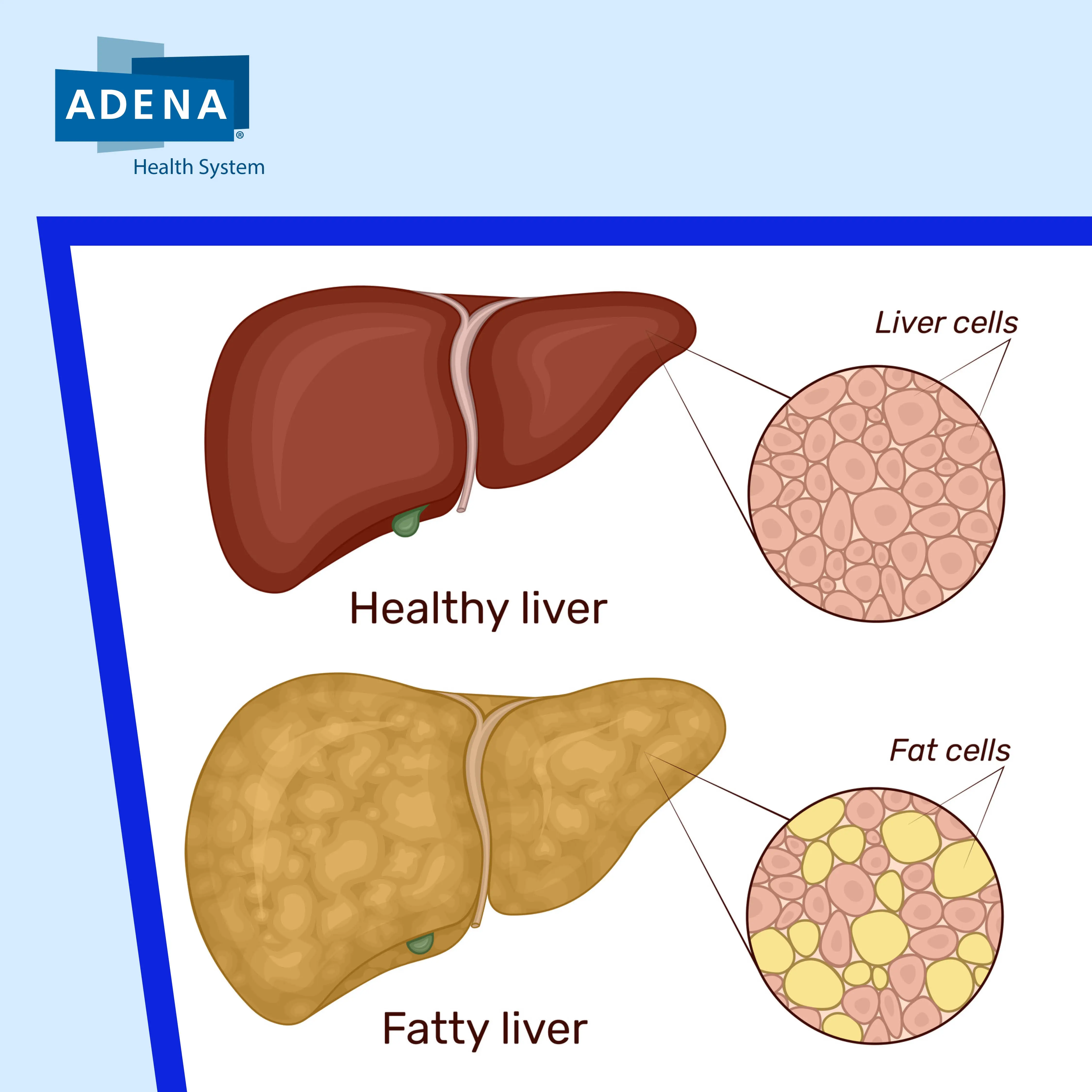Fatty Liver Disease

The Battle of the Bulge Includes Your Liver
‘Does this make me look fat?’ is a question no one wants to answer. We’re all sensitive about how we look. We’re also sensitive about what we’re putting into our bodies, which is why nearly everything at the grocery store is available in low-fat options. From coffee creamer to deli meats, everyone is lowering the fat content of everything.
With our obsession over all things fat, we should be asking ourselves the question no one ever thinks to ask: ‘Does my liver look fat to you?’
You only live(r) once
All the blood in your stomach and intestines passes through your liver. It’s an extremely valuable organ in your body. It breaks down, balances and creates nutrients, as well as metabolizes medications into forms your body can easily use. Fatty liver disease happens when you have fat inside your liver that can, over time, hurt liver function and cause injury.
It can also lead to much more serious conditions, including cirrhosis (scarring) and liver failure.
Types of fatty livers
Fatty liver disease for people who don’t consume heavy amounts of alcohol can be broken down into two types:
- NAFLD (nonalcoholic fatty liver disease) – You have fat in your liver, but there is no damage.
- NASH (nonalcoholic steatohepatitis) – You have fat in the liver with signs of inflammation and liver cell damage.
According to John Hopkins Medicine, about 10–20% of Americans have NAFLD, and about 2–5% have NASH.
People who drink too much alcohol can also have fat in their liver, but that condition is different from fatty liver disease.
While your liver breaks down most of the alcohol you drink, the process can generate harmful substances. These substances can damage liver cells, promote inflammation, and weaken your body's natural defenses. The more alcohol that you drink, the more you damage your liver.
Causes
It’s unclear exactly how a liver becomes fatty. It’s assumed the same thing that causes fat on your body causes fat in your liver: eating too many calories. But fat can also come from other parts of your body, or your liver can absorb fat from your intestine. The liver itself can even lose the ability to process and break down fats as it normally should, causing a fat build-up.
Alcohol abuse, rapid weight loss and malnutrition can also trigger a fatty liver. However, some people can develop a fatty liver with none of these conditions.
“While excess calories and obesity are risk factors for developing fatty liver, specific diets are not felt to be the source of fatty liver, but alcohol can play a role,” according to Bennie Upchurch, MD, FACP, AGAF, FACG, FASGE, a gastroenterology specialist at Adena. “Medical conditions such as diabetes, high cholesterol, and obesity are felt to be primary sources of fatty liver.”
Silent symptoms
Unfortunately, a fatty liver doesn’t produce any noticeable symptoms. It’s usually discovered when you have medical tests for other reasons. NASH can cause damage to your liver for years or even decades with no hint of a symptom or warning sign.
As the disease progresses, you may experience:
- Fatigue
- Weight loss
- Abdominal pain
- Weakness
- Confusion
Diagnosing fatty liver disease
Fatty liver disease can usually be detected during a routine checkup in one of two ways:
- Something unusual is discovered in a blood test
- Your health care provider notices your liver is slightly enlarged
Your doctor may order more blood tests (including liver function tests), an ultrasound, a computed tomography (CT) scan or medical resonance imaging (an MRI) to be sure. Once other liver issues can be ruled out, you may require a liver biopsy, where your doctor will remove a liver tissue sample and check it under a microscope.
Keeping the fat out of your liver
There are no medical or surgical treatments for fatty liver, but there are things you can do to help prevent or reverse some of the damage. This includes:
- Avoiding alcohol
- Controlling your diabetes
- Eating a balanced, healthy diet
- Increasing your physical activity
- Losing weight safely (no more than one to two pounds a week)
- Lowering your triglycerides through diet or medication
- Receiving regular checkups from a doctor who specializes in liver care
“Although there have been numerous studies and numerous medications targeted at fatty liver disease, none have been proven safe and effective,” says Dr. Upchurch. “Future studies target the amount of fibrosis or liver scarring from the injury caused by fatty liver, and there by preventing advanced liver disease or cirrhosis. Supplemental Vitamin E at standard dosing has been used for many years and may improve fatty liver and liver blood test abnormalities, but has not been shown to halt the progression of fibrosis and the potential for development of cirrhosis. “
Lose weight, not sleep
Most people don’t lie awake at night worrying about fat in their liver. But it’s something to be aware of if you are overweight, obese, or have diabetes. It’s always a good idea to talk to your doctor if you have concerns. With some basic lifestyle changes, you can greatly lower your risk of getting fatty liver disease. And it can help reverse the effects if you are diagnosed.